Sky islands refer to mountains tall enough to have a completely different ecosystem at higher elevations than the surrounding lowlands. The surrounding lowlands are almost always desert environments that contrast the forested ecosystems far above the hot desert floor. These mountains are isolated and aren’t closely connected in a huge corresponding range that provides similar high-altitude habitats within an accessible distance.
As a result, the plants and animals on these sky islands are sequestered in their limited region. In some instances, different lifeforms have evolved into endemic species due to this isolation. This is similar to what happens on ocean islands, which is why they earned their descriptor of sky island.
Because of a sky island’s isolation, each of the more than 20 sky islands is truly unique. Let’s go over 9 sky islands worldwide by delving into some details about where they’re located and the life that lives there.
9. Tibesti Mountains

The Tibesti Mountains are a sky island in the Sahara Desert.
©Michael Kerling from Berlin via Wikimedia Commons - Original / License
The Tibesti Mountains lie in Africa’s central part of the Sahara Desert. Most of the range is in northern Chad, with a small portion tipping over the border into south Libya. The highest peak in the entirety of the Sahara is Emi Koussi in the Tibesti Mountains at over 11 thousand feet above the desert floor.
The mountains are dramatically cooler and moister than the surrounding desert. Scientists believe that there are endemic plants and animals. However, political instability means the area has not been explored much.
Animals with limited ranges, like the golden jackal (Canis aureus), Barbary sheep (Ammotragus lervia), striped hyena (Hyaena hyaena), and rhim gazelle (Gazella leptoceros) around the Sahara use these mountains as a refuge. While various animal species call this area home, rodents are the most proliferous mammals in residence, like the bushy-tailed jird (Sekeetamys calurus).
Wadis are running through the mountains and sustain the local flora. Some plants that survive in the region between about 5 thousand and 7500 feet in height include oleander (Nerium oleander) and Saharan myrtle (Myrtus nivellei). Lavender (Lavandula pubescens) and red-leaf figs (Ficus ingens) grow at these elevations in the southwest part of the mountains.
8. Sierra de Tamaulipas

In the northeastern State of Tamaulipas in Mexico lies a sky island in the Sierra de Tamaulipas.
©William L. Farr - Own Work - 21 July 2003 - Wilafa - Original / License
In Mexico’s northeastern state of Tamaulipas lies the Sierra de Tamaulipas. Its highest peak is about 4100 feet in elevation. The mountains are isolated from other ranges in the area, and the base is made up of desert shrublands. As elevation increases, this ecosystem changes into a pine and oak forest.
The Sierra de Tamaulipas provide a rare yet fragmented habitat for species in the region. For example, jaguars (Panthera onca) live from about 1300 feet to 3000 feet in elevation. They’re also an isolated haven and stopover for black-headed nightingale thrushes (Catharus mexicanus) in a barren spot in this bird’s wider range.
7. Santa Rita Mountains

Near Tucson in Arizona lies the Santa Rita Mountains, which serve as a sky island.
©Beach Creatives/Shutterstock.com
The Santa Rita Mountains provide a rare environment for animals that wouldn’t survive in the surrounding Sonoran Desert. For example, white-nosed coatis (Nasua narica) and elf owls (Micrathene whitneyi) are home within these mountains. These mountains are well known for their oak savannahs, oak woodlands, and grasslands, which starkly contrast to the desert at the base.
The highest point in the Santa Rita Mountains in southeast Arizona near Tucson is Mount Wrightson, which is a little over 9450 feet in elevation. A famous jaguar (Panthera onca) named El Jefe lived in these mountains from 2011 to 2015 and was the only jaguar living in the United States. He disappeared in 2015 and is believed to have returned to his natural range in Mexico to breed.
6. Sacramento Mountains
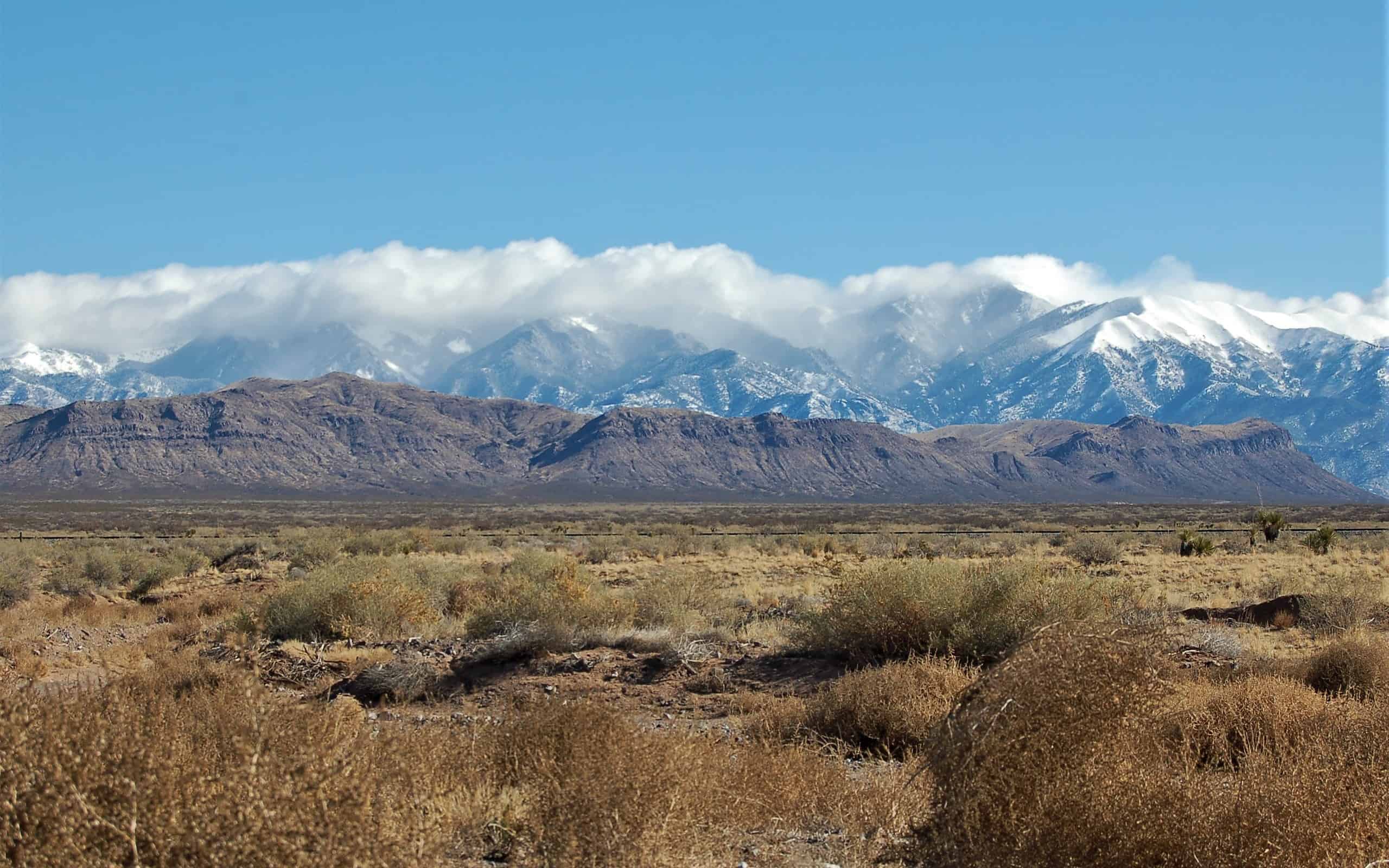
The Sacramento Mountains in New Mexico act like a sky island with endemic species.
©Photo by Peter Rimar - Dec 31st, 2009 - Own Work - Uploaded 15 December 2022 by Chitrapa - Original / License
The Sacramento Mountains of New Mexico comprise three parts, with the entirety of the range extending 85 miles. The middle section is the only part that reaches altitudes beyond 7500 feet, with Cathey Peak being the tallest, holding a name at 9645 feet. Two other peaks that don’t have names are about the same height.
Sacramento Mountains thistles (Cirsium vinaceum) and Sacramento prickly poppies (Argemone pinnatisecta) are two endemic plant species. These prickly poppies grow up to 5 feet tall at elevations between 4200 feet and 7100 feet. Sacramento Mountains thistles are purple perennials that resemble milk thistles (Carduus nutans) that grow above 8000 feet.
5. San Jacinto Mountains

The San Jacinto Mountains in Southern California are a sky island near Palm Springs.
©Richard Par/iStock via Getty Images
The San Jacinto Mountains are one of the sky islands in Southern California’s deserts that support a conifer forest made mainly of ponderosa (Pinus ponderosa), lodgepole (Pinus contorta), and Jeffrey pines (Pinus jeffreyi). Located between Hemet and Palm Springs in the desert to the northeast of the San Diego area, the San Jacinto Mountains are home to endemic flora and fauna. San Jacinto Peak, at 10,834 feet, is the highest point within these mountains.
The shaggy-haired alumroot and the San Jacinto shieldback katydid (Phymonotus jacintotopos) are endemic species in these mountains. The San Jacinto shieldback katydid has a unique coloring unlike similar species of shieldback katydid, and it lives in trees growing between 5 thousand and 10 thousand feet in elevation. The perennial shaggy-haired alumroot (Huechera hirsutissima) grows on rocky inclines between 2,200 and about 10,500 feet in elevation.
4. Sierra de Juarez
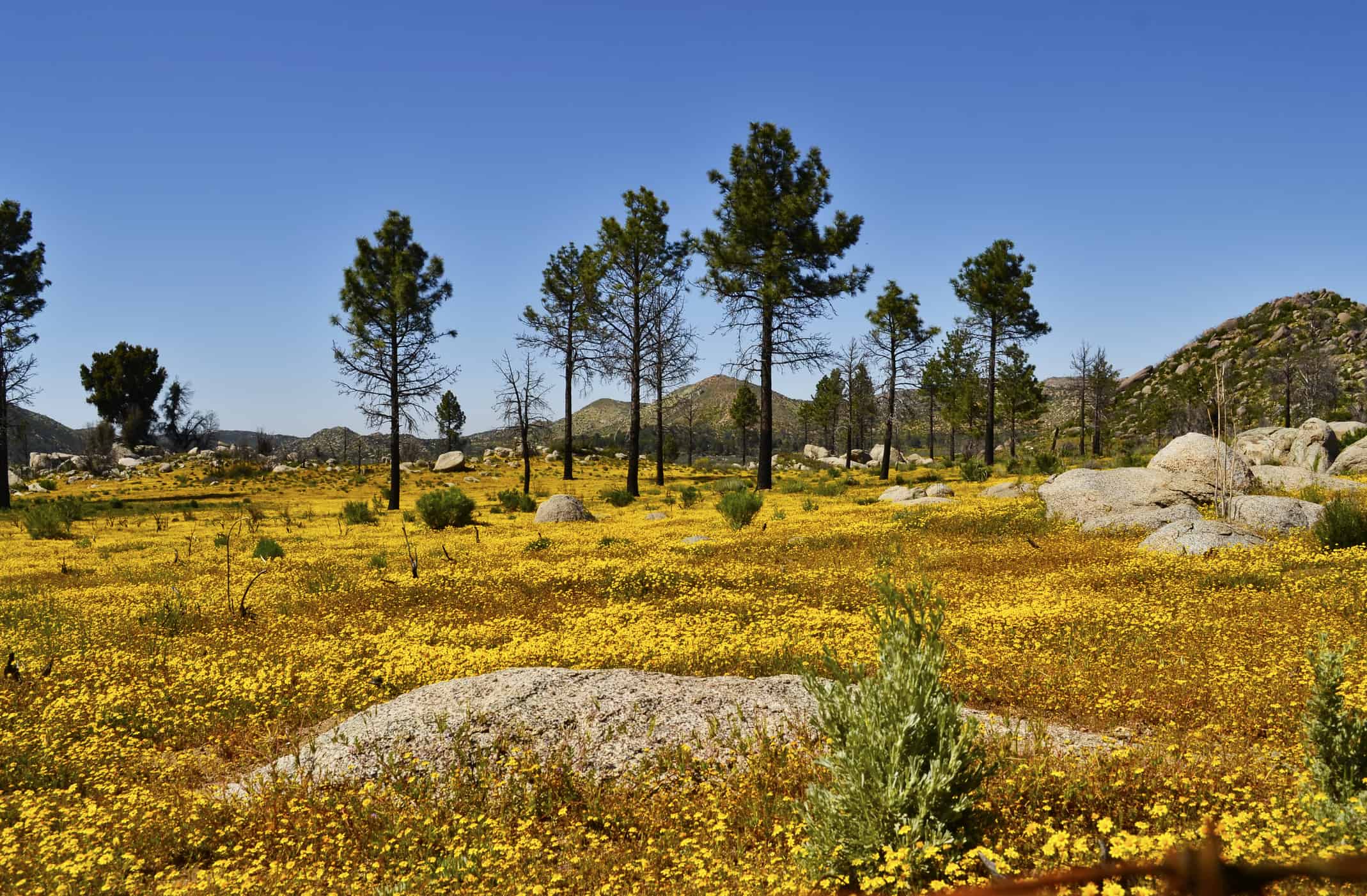
Northeastern Baja California in Mexico has a sky island in the Sierra de Juarez.
©Moises Fco Lopez Smith/iStock via Getty Images
In northeastern Baja, California, in Mexico, lies the Sierra de Juarez. The upper elevations harbor a coniferous forest filled with trees like sugar pines (Pinus lambertini), lodgepole pines, incense cedars (Calocedrus decurrens), and Jeffrey pines.
The forests associated with the Sierra de Juarez are especially interesting because of the tree diversity in the area. There are ten different kinds of pines in residence. Special animals also take refuge in the range, including California condors (Gymnogyps californianus), bobcats (Lynx rufus), fringed myotis bats (Myotis thysanodes), and ornate shrews (Sorex ornatus).
3. San Francisco Peaks
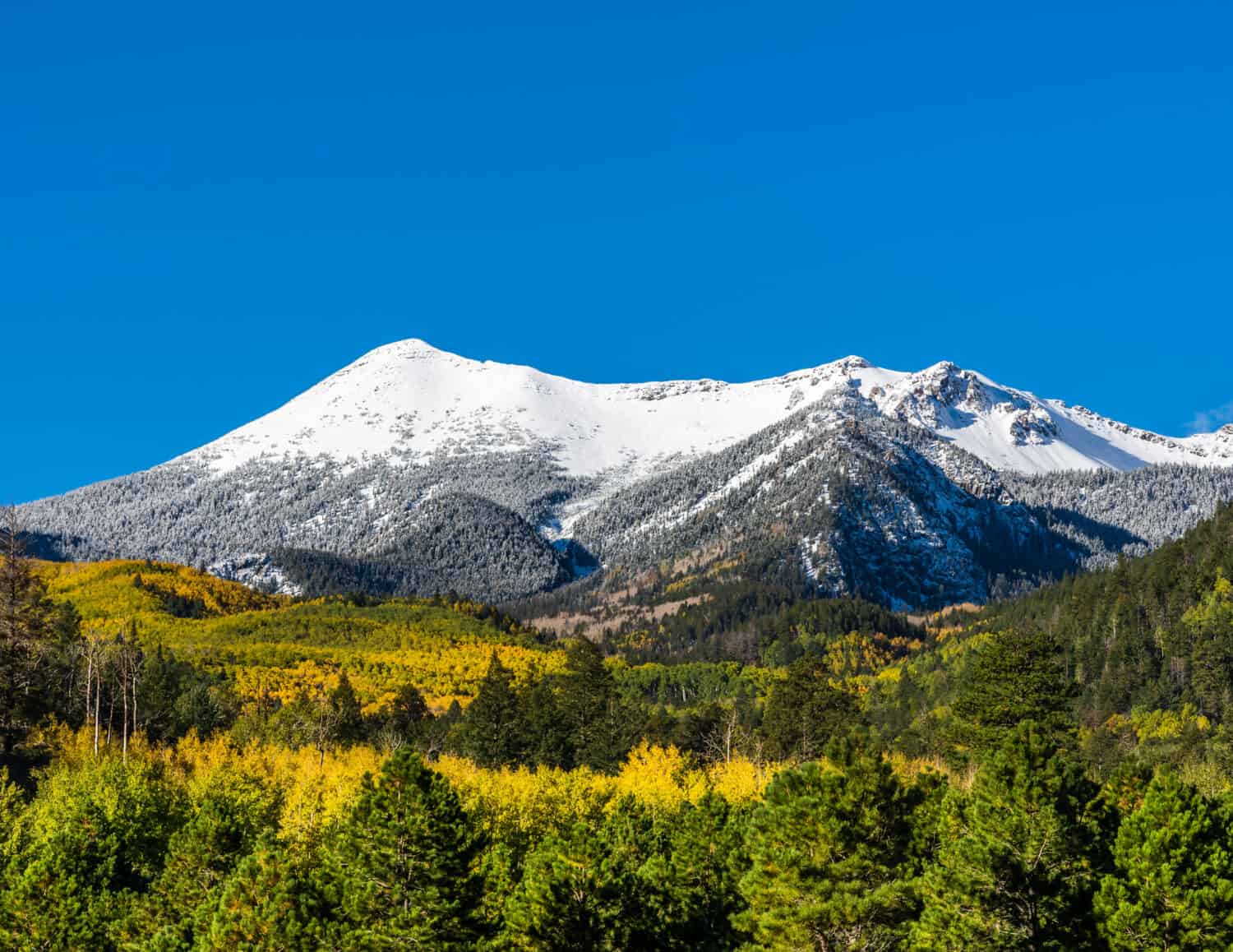
The San Francisco Peaks are a sky island in Arizona with the only alpine tundra in the state.
©Kyle Benne/Shutterstock.com
The San Francisco Peaks in Arizona lies North of Phoenix and close to Flagstaff. Humphreys Peak is 12,673 feet tall and is the highest peak in Arizona. The San Francisco Peaks have the only alpine tundra environment in Arizona that begins at 10,600 feet.
Within the alpine tundras of the San Francisco Peaks is an endemic plant species called the San Francisco Peaks groundsel (Packera franciscana). This special groundsel is a perennial that only grows on Humphreys and Agassiz Peak. Agassiz Peak is second only to Humphreys Peak in altitude within Arizona, with a max height of 12,360 feet.
2. Mount Kilimanjaro
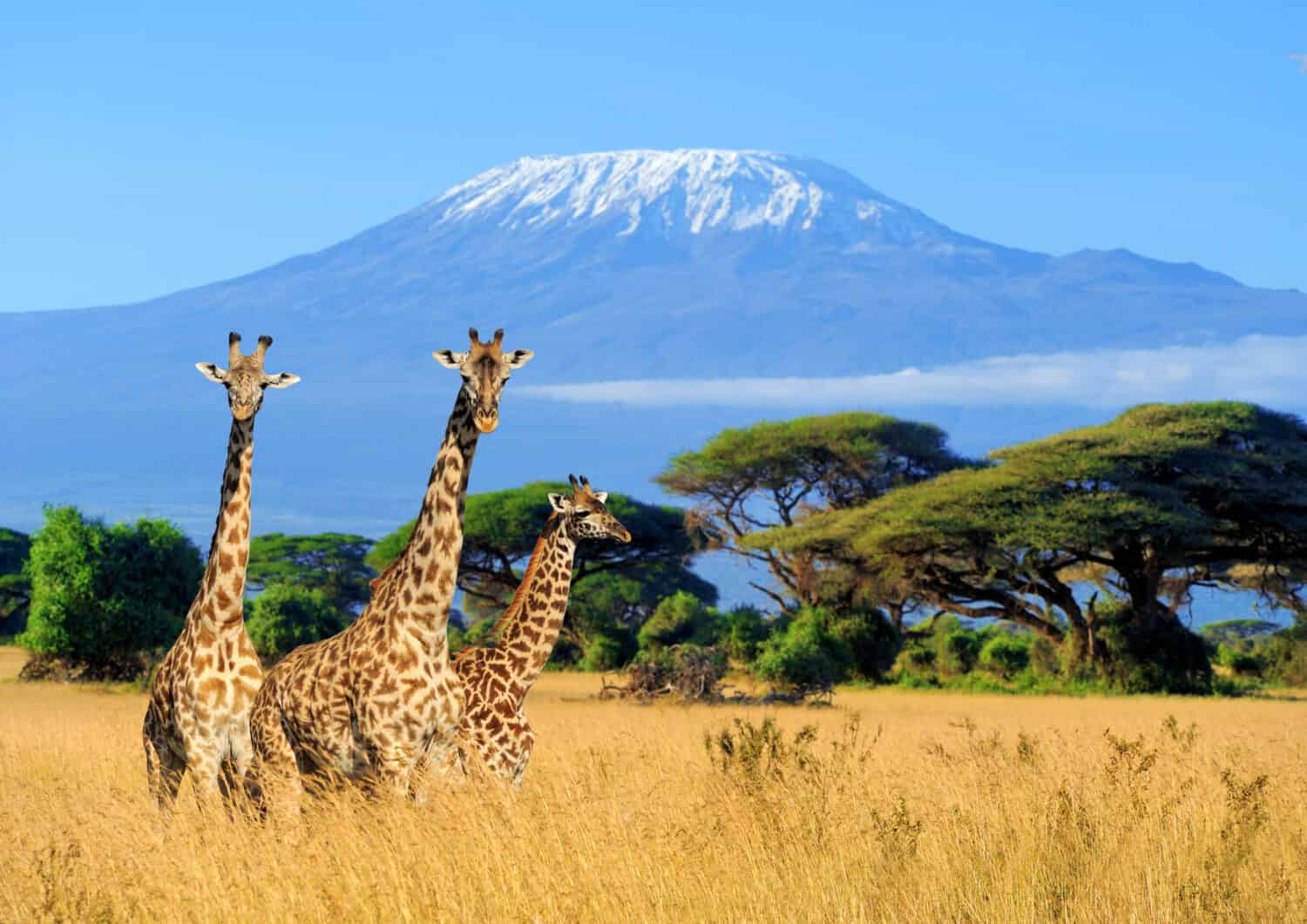
In southeastern Tanzania lies Mount Kilimanjaro, which serves as a sky island.
©Volodymyr Burdiak/Shutterstock.com
In the southeastern part of Tanzania lies Mount Kilimanjaro. This mountain is the tallest in Africa at 19,341 feet tall. It’s so tall that it affects the trade winds around it, which forces moisture up the mountain.
Mount Kilimanjaro is within a couple hundred miles of the equator, and the base is in a subtropical zone. When a person reaches the summit, they are in an arctic zone.
There are around 12 endemic liverworts and mosses, 6 endemic plant species, four endemic butterflies, and one endemic shrew. The Kilimanjaro mouse shrew (Myosorex zinki) is an endemic mammal living in the montane forests and upper moorlands on the mountain. This means they only live at elevations between 6000 feet to 13,000 feet.
1. Chisos Mountains
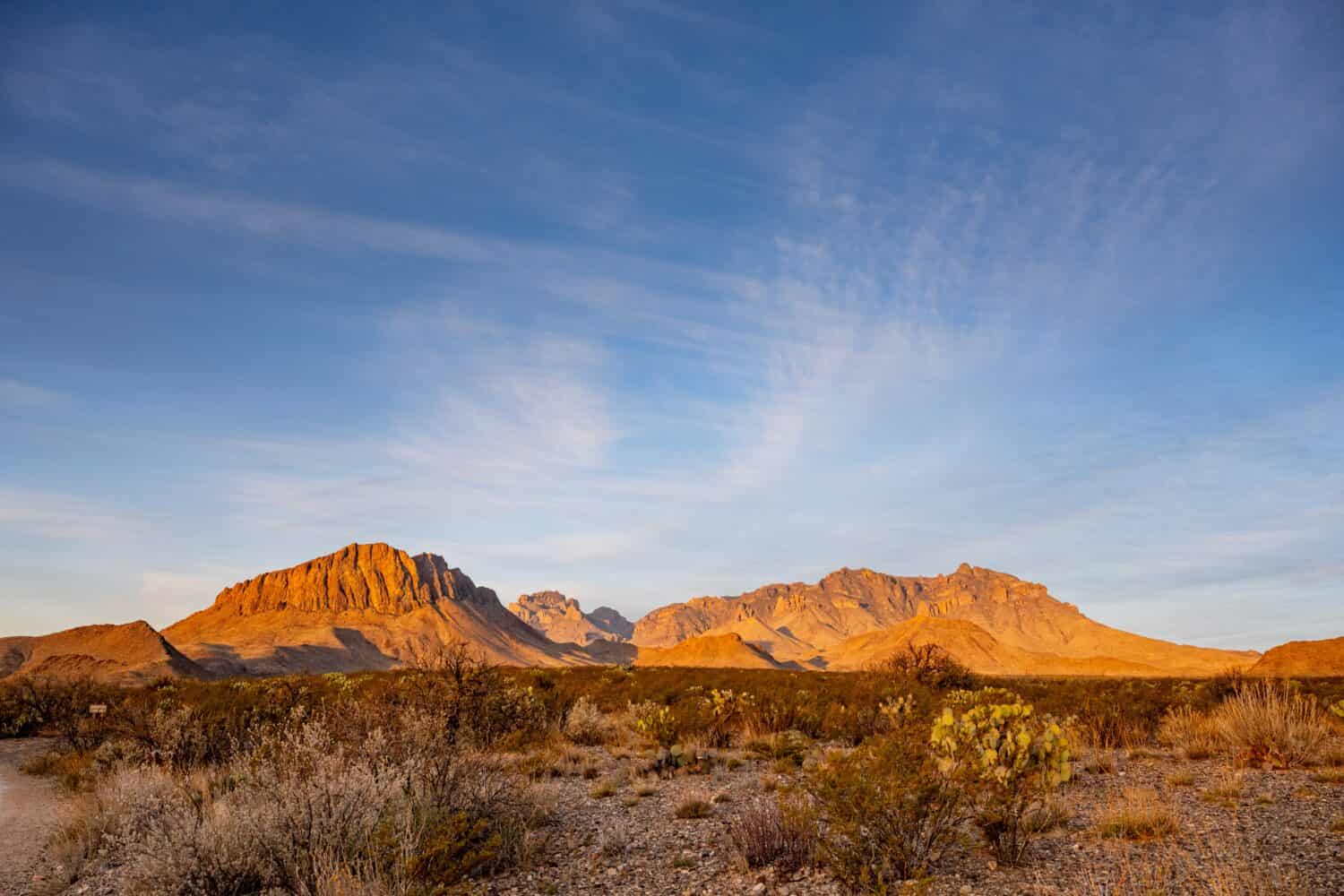
Texas hosts the Chisos Mountains which are a sky island in Big Bend National Park.
©Kelly vanDellen/Shutterstock.com
The Chisos Mountains in Big Bend National Park are a sky island in the Chihuahuan Desertof Texas. The highest point in the range is Emory Peak, which is a bit over 7,800 feet.
The forests that the Chisos Mountains support host mostly Mexican pinyon pines (Pinus cembroides). It also provides a rare haven for about 300 traveling bird species like Colima warblers (Oreothlypis crissalis) and Mexican jays (Aphelocoma wollweberi). Mammals like black bears (Ursus americanus) also make this area their home even though the surrounding desert is uninhabitable.
The photo featured at the top of this post is © Kelly vanDellen/Shutterstock.com
Thank you for reading! Have some feedback for us? Contact the AZ Animals editorial team.







